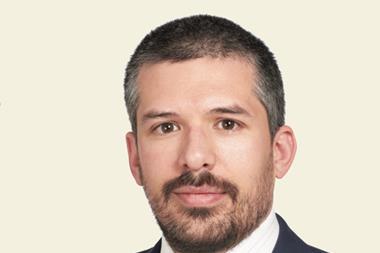To regain the trust of regulators and the public, the derivatives industry must establish a common framework of transparent risk standards, says MSCI's Christopher Finger.
The controversy surrounding the use of risk models was stoked again recently with the publication of the Basel Committee's study of internal capital models, which reveals large disparities in risk assessments on a standard set of trading portfolios, and raises doubts on the long-term dependence on risk models for capital.
In a related development, the Committee, together with the International Organisation of Securities Commissions, just released its "near-final proposal" on margin requirements for non-centrally cleared derivatives. The proposal confirms a place for risk models in the risk-mitigation process for essentially all derivatives trades.
The industry is at a crossroads, committing to greater reliance on models while revealing model shortcomings. It would be a step backward to abandon the notion of risk sensitivity for margin and capital, and yet the Basel Committee study undermines the trust regulators and the public might have in risk models. To regain this trust, we recommend that the industry collectively establish a common framework of transparent risk standards.
Capital is an obvious place to start. The original Capital Accord of 1988 was motivated by the single global principle of the 'level playing field'. But regulatory arbitrage opportunities in a single capital framework led eventually to the adoption of a second principle – risk sensitivity – and the authorisation of banks to set capital according to internal risk models.
Unfortunately, with very little description of actual modelling practices, model-based capital standards have given rise to insinuations that some banks, or even some jurisdictions, are lighter on the same risks than others. At the same time, public risk disclosures based on internal models have been ineffective. Analysts cannot compare risks across banks, nor identify whether an increase in risk is active (meaning the bank has shifted positions) or passive (meaning the markets in which the bank operates have heated up).
The principles of a level playing field and risk sensitivity are not incompatible, however, and the Committee's recent study points to a solution. As a condition of model approval, in addition to the processes that exist today, we suggest regulators require banks to disclose their model's assessment of risks on a set of standardised, representative portfolios. These risk standards could help establish the Basel Committee's desired 'variation benchmark – the acceptable degree of variability due to differing modelling assumptions and appetites for risk. At the same time, systematic biases would be revealed, or suspicions of them refuted.
Margin: The new role for models
Whereas capital has been regulated internationally for decades, reform of how derivatives trade, a reaction to the financial crisis of 2008, is only now going into effect. Most standard derivatives will fall under mandates to be cleared through a central counterparty (CCP), while non-cleared derivatives (those that fall outside the mandates) will be subject to both higher capital charges and strict requirements on margin.
For both cleared and non-cleared derivatives, an important risk-mitigation mechanism will be the initial margin (or independent amount). This mechanism is intended to cover the surviving counterparty (the CCP for a cleared derivative) for potential losses incurred from the time of a counterparty default to the time at which the contract is closed out, or replaced.
As with capital, it is clear that an effective initial margin mechanism must be risk sensitive: different contracts will have different potential losses, and the initial margin charged should reflect this. This demands models, and leads to many of the same issues as with models for capital. How can the industry ensure the models are sound, and the playing field is level?
For cleared derivatives, the responsibility falls to the industry to demand sound and transparent models of the CCPs. For non-cleared derivatives, the potential for every participant to propose its own initial margin model raises concerns about dispute resolution and fairness. The negotiation of a bilateral derivative contract should include a stipulation for whose risk model determines margin. If the choice is that each party demands margin according to its own model, how can the parties agree the two models assess risk to the same standard? And if the choice is to have only one party's model drive margin, then how can the other party confirm the model's independence, let alone quality?
A future for risk models
As with capital, risk standards must be part of the solution. For straightforward transactions, there may be some evolution to independent standard models for the actual margin calculations. But the power of risk standards extends further. An independent, industry-accepted framework would provide a baseline with which market participants of all levels of sophistication could evaluate counterparty models, and from which parties in a bilateral agreement could define tolerances for their own model results.
The need for risk sensitivity for both capital and margin is indisputable. But risk models for capital have had an uneven history, and models for margin are only now becoming mainstream. A common framework of risk standards is the industry's best hope to salvage risk models for capital and to ensure their success for margin in the transformed market for derivatives.
Christopher Finger is executive director of applied research at MSCI












No comments yet